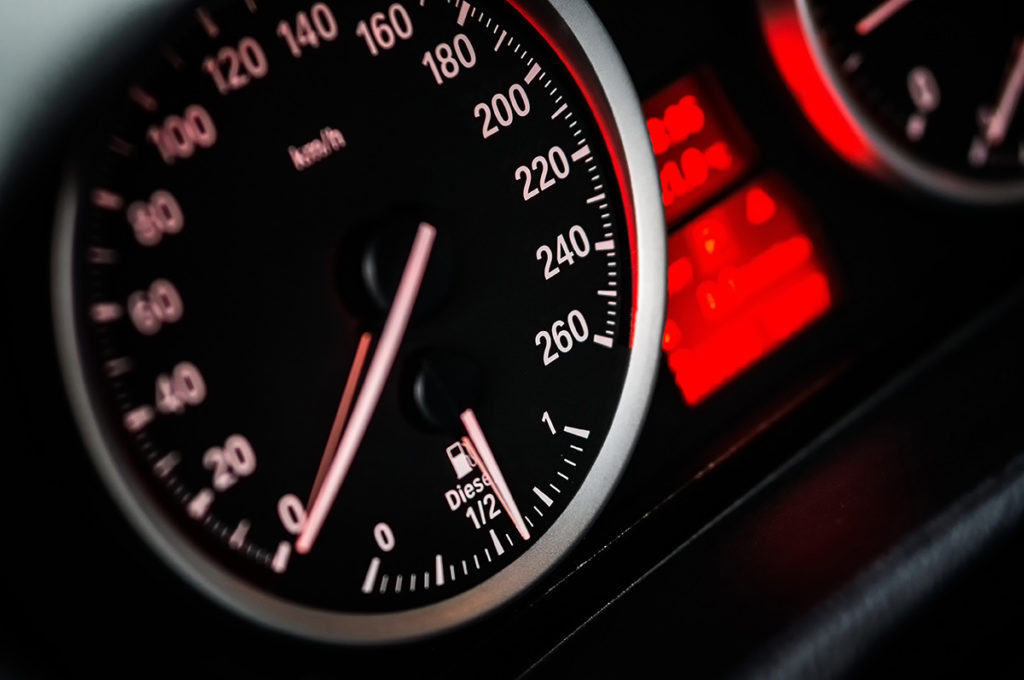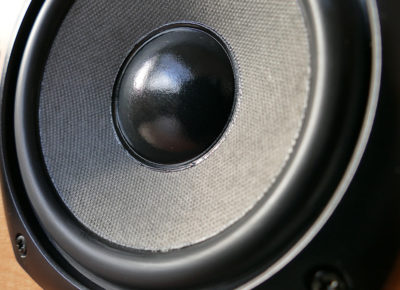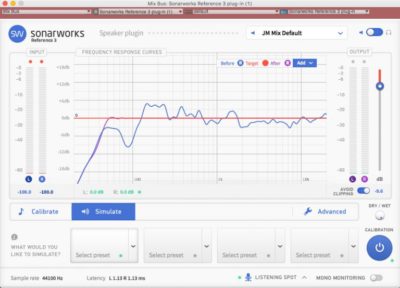The Hidden Danger Of Checking Your Mixes In The Car
You’ve been glued to your computer monitor for 12 hours. You’re about to pass out on your MIDI keyboard. And the mix? It sounds killer.
But before you click “Bounce To Disk” for the last time… You hop in your ‘04 Honda Civic, plug the aux cable into your iPhone, and take your track for a spin around the block.
 Sound familiar? If so, you’re not alone. For many, this “car check” is an essential part of the mixing process.
Sound familiar? If so, you’re not alone. For many, this “car check” is an essential part of the mixing process.
But what if this classic mixing technique is actually making your tracks sound worse?
Below, we’ll explore the hidden downsides to checking your mixes in the car.
And if you want to dive even deeper, download the free mix translation resources referenced in this post, here.
These videos and guides that go along with this article should minimize your mix translation challenges and help you easily craft tracks that sound great on all sorts of different speakers. Which is…
The Goal Of Mix Translation
It’s impossible to craft a mix that sounds “perfect” on all speakers.
 You’re never going to hear an 808 on an iPhone. And a pristinely recorded string section will never sound great on a boombox.
You’re never going to hear an 808 on an iPhone. And a pristinely recorded string section will never sound great on a boombox.
In fact, as you’ll soon discover, trying to make your mixes sound great everywhere will likely make them worse.
A better goal?
Try to craft a mix that sounds good on the widest variety of speakers possible.
This way, you’ll ensure the largest number of listeners enjoy your work.
So how do you do this? To start, you’ve got to understand the speaker bell curve…
The Speaker Bell Curve
Imagine placing all the speakers in the world on a graph based on how much low end they have.
Bass-light speakers (like iPhone earbuds) would go on one end. Speakers with too much bass (like Beats headphones or a Jeep with subs) would go on the other end. And speakers with the perfect amount of low end (like a good pair of studio monitors) would go in the middle.
Since the majority of speakers are fairly flat and balanced, most speakers would fall near the middle. As you move away from the center and off to the sides, the number of speakers would trail off.
Your graph would Look something like this:
You could draw similar graphs to represent other characteristics of speakers, like distortion or high-end response. But each graph would look roughly the same: Most speakers would fall near the middle, and the number of speakers would trail off as you move away from the center.
Aim For The Middle
Remember—your goal isn’t to make mixes that sound great everywhere. It’s to craft mixes that sound good on the widest variety of speakers possible.
There’s only one way to do this: You’ve got to aim for the middle.
 Ideally, your mix should sound perfect on speakers right in the center of the bell curve—speakers that are flat and neutral.
Ideally, your mix should sound perfect on speakers right in the center of the bell curve—speakers that are flat and neutral.
This way, your mix will still sound good on the majority of speakers. Because the majority of speakers sit only slightly left and right of the center of the bell curve.
On speakers with slightly less bass, your mix will sound slightly bass-light. And on speakers with slightly more bass, your mix will sound slightly bass-heavy. But it will still hold up.
Your mix will fall apart on speakers that are far away from the center of the bell curve. But since there are a fewer number of these speakers, this problem is minimal. And guess what? All other good-sounding mixes will fall apart on them too.
If you want to craft mixes that sound good on the widest variety of speakers possible, you’ve got to aim for the middle.
The real trouble comes when you try to tailor your mix to accommodate one end of the bell curve…
The Problem With Car Checks
The speakers in most cars are far from “flat”.
They tend to either have super-bass, or be bright and thin. Either way, they often fall far to one end of the bell curve.
 Imagine your car speakers have lots of low end.
Imagine your car speakers have lots of low end.
When you listen to your mix on this system, the bass sounds too loud. So you go back to your studio and turn it down.
Now, your mix sounds better in your car. But you’ve skewed it to accommodate just one end of the bell curve.
The result?
Your mix will sound better on speakers that have too much bass, but worse on speakers in the middle of the bell curve. And, as you move down the other side of the bell curve and listen on speakers with less bass, your mix will completely fall apart.
Remember: Most speakers fall slightly to the left and right of the middle of the bell curve. But since you’re no longer aiming for the middle, your mix will sound good on fewer speakers.
If your goal is to craft a mix that sounds good on the widest variety of speakers possible, then your decision just led you in the opposite direction.
Not Just The Car: Avoiding The Ends Of The Bell Curve
This problem isn’t only caused by checking mixes in the car. It can result from listening on any speakers that don’t represent the middle of the bell curve.
Whenever you start changing your mix to accommodate one end of the bell curve, you’re moving farther away from where you want to be.
Remember the goal: Your job is to craft a mix that sounds good on the widest variety of speakers possible. The only way to do this is to aim for the middle.
This means if you have one listening environment that represents the middle of the bell curve, you’re set. Mix in here alone, and you’ll be optimizing your tracks for maximal translation—no car check needed.
Replacing The Car Check: 4 Strategies For Improving Mix Translation
Mixing in a flat, neutral environment may sound more like a dream than a reality. If so, the following 4 strategies can help improve the way your mixes translate:
1. Optimize Your Listening Environment
You should still try to make the most of whatever space you’ve got. The closer you can get to the center of the bell curve, the better your mixes will translate.
 For starters, find the right spot for your speakers and listening position in your room.
For starters, find the right spot for your speakers and listening position in your room.
This won’t cost you a dime, and it can often make a massive impact. For more on how to pull this off, download the resources at the bottom of this article.
Next, invest in a good set of monitors and acoustic treatment. And finally, consider room correction software like Sonarworks Reference 3.
While software isn’t a substitute for everything mentioned above, it can still offer significant benefits.
2. Listen On Both Sides Of The Bell Curve
If your listening environment isn’t ideal, it may still be worthwhile to check your mixes on different speakers. When doing so, balance your checks by listening on both sides of the bell curve.
For example, if you listen on a bass-heavy system, counter this by listening on a system that’s bass-light. Do this before making any changes to a mix. This way, you’ll avoid skewing it to accommodate just one side of the bell curve.
3. Reference
Compare your work to other commercial recordings while mixing. This can help you strike stronger balances, combat poor room acoustics, and ultimately, craft mixes that translate better. For more on this technique, I recommend reading my article on referencing.
4. Invest In Mastering
A mastering engineer will ensure that your mixes translate to the best of their ability. They can also offer you feedback on your work, which can help improve your mixing skills.
If you regularly send off tracks for mastering, compare the masters to your original mixes and look for trends. If you notice, for example, that many of the masters have more low end than your mixes, you may be hearing too much low end in your studio (which is causing you to compensate by turning down the bass in your mixes). Over time, this practice can help you craft mixes that translate better.
Takeaways And Additional Resources
Always remember the goal of mix translation:
Don’t try to craft mixes that sound great on all speakers. Instead, aim for the middle and try to craft a mix that sounds good on the widest variety of speakers possible. You’ll save time, eliminate frustration, and ensure the largest number of listeners enjoy your work.
For more actionable mix translation tips, check out the free additional resources below. These videos and articles will minimize your mix translation challenges and help you easily craft tracks that sound great on different speakers.
Included, you’ll find:
- 7 Simple Steps To Optimize Your Speaker + Sweet Spot Placement (Video)
- How To Make Your Mixes Sound Great On Small Speakers (PDF)
- My Favorite Acoustic Treatment Resources (PDF)
- My Top 5 Reference Mixes + How To Use Them (PDF)
Before you go—what do you do to ensure your mixes sound great on different speakers? Leave a comment below and let me know!
Jason Moss is an LA-based mixer and educator. Learn how to craft a clear, balanced low end by downloading these free excerpts from his premium training course, Mixing Low End.
Please note: When you buy products through links on this page, we may earn an affiliate commission.









Danwriter
July 13, 2017 at 5:53 pm (7 years ago)Shelly Yakus liked to tell the story of having a low-power FM transmitter at the old A&M Studios. They’d listen to a mix in a vintage Chevy in the parking lot. That way, they were hearing how broadcast filters and compression impacted the mix.
Mruhlen
July 13, 2017 at 7:40 pm (7 years ago)I think if you choose your “car check” system wisely, you can get good results. I know a guy that checks all his mixes on a Mark Levinson system in his Lexus and his mixes are outstanding! There are good car audio systems out there … you just have to look (listen) for them.
Tony Rey
July 14, 2017 at 5:15 am (7 years ago)I’ll tell you why I rely on my car mix as a significant component of finding the right balance: I know what my car sounds like. Yes, I have my onboard EQ set the way I like it. And a great deal of the music I listen to is on those speakers while I’m driving. Therefore, if my mix doesn’t sound as good as all the other stuff I listen to in there then I know something needs to be tweaked. But if it does sound good in there, I know I can cross that component off the list.
Nick Osher
July 21, 2017 at 11:27 am (7 years ago)I would agree with some of these other guys. Obviously depends the car and the car’s acoustics.
My old “beater civic ” sounded amazing. IMO, it was the shape on the cars interior that just brought out a good sound.
These days I drive an Audi and it has “Nasty ” stock speakers and i love testing mixes in it. Btw. I can hear my 808s on my iphone. Whats up with that? Ha. Try some MS eq’ing , saturation and Echannel. Boom clearn 808s on iphone. Kick , bass and all
Mittens
July 27, 2017 at 4:31 am (7 years ago)Isn’t the point of doing a car check is that the place where you most often listen to your favourite music? . . . So you instantly know how your music sounds in contrast to that music? Your using it as a comparative system and not a reference sound per say?